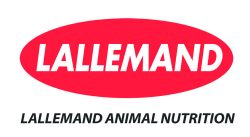Feed Costs Grow as Silage Shrinks |
|
|
This item has been supplied by a forage marketer and has not been edited, verified or endorsed by Hay & Forage Grower.  Up to 10 points — or more — of silage dry matter (DM) losses can be prevented. Avoiding silage shrink helps producers maintain available feedstuffs and retain valuable nutrients at the same time. “When producers have preventable DM losses, thousands of dollars are being lost that could be avoided,” says Renato Schmidt, Ph.D., Forage Products Specialist, Lallemand Animal Nutrition. “Conserving silage quantity and quality properly, can save producers a significant amount of money.” On average about 15 percent total DM loss is to be expected, but additional losses can be prevented through good management practices, Dr. Schmidt notes. In fact, these DM losses are made up of the more valuable nutrients such as sugars, starches and soluble proteins. This leaves a higher concentration of lower- or non-value nutrients, like fiber and ash. “Ensuring higher silage quality by retaining more nutrients gives cattle a better overall feedstuff, which can affect gains and even health status,” he says. DM losses occur by two primary means: losses during the initial fermentation (active ensiling) and aerobic spoilage losses. The key to reducing initial fermentation losses is to fill, pack, cover, seal quickly and use an inoculant proven to dominate the fermentation and produce a rapid, efficient pH drop. For example, using the lactic acid bacteria (LAB) Pediococcus pentosaceus 12455 — which is fueled by sugars generated by high activity enzymes — promotes a fast, efficient front-end fermentation. Promoting a fast pH drop can also help stabilize forage and reduce yeast growth, which is a major cause of silage heating. With spoilage losses, the key is to prevent or delay the growth of yeasts, and subsequently molds, that grow when oxygen gets into the silage at feedout. Again, choosing the right forage inoculant can help: the high dose rate Lactobacillus buchneri 40788 is reviewed by the FDA and allowed to claim efficacy in preventing the growth of yeasts and molds in silages and HMC. In a study at University of Florida, Gainesville DM loss was reduced by 4.4 percent when corn silage was treated with L.buchneri 40788 combined with Pediococcuspentosaceus and stored for nearly six months. The resulting silage also had reduced spoilage and improved nutrient retention.1 Forages that are prone to spoilage include drier haylage, corn and cereal silages, HMC and cereal grains, baleage and baled hay. In these forages, producers should consider combining P. pentosaceus 12455, enzymes and L. buchneri 40788. This offers the benefits of both a fast, efficient fermentation and reducing heating and spoilage at feedout. “Using a research-proven silage inoculant that has been shown to reduce spoilage pays dividends,” Dr. Schmidt says. “When producers reduce spoilage, they have more total tons of feed with well-preserved nutrients. It pays to reduce dry matter losses!” Lallemand Animal Nutrition is committed to optimizing animal performance and well-being with specific natural microbial product and service solutions. Using sound science, proven results and knowledge, Lallemand Animal Nutrition develops, manufactures and markets high value yeast and bacteria products ─ including probiotics, silage inoculants and yeast derivatives. Lallemand offers a higher level of expertise, leadership and industry commitment with long-term and profitable solutions to move our partners Forward. Lallemand Animal Nutrition is Specific for your success. For more information, please visit www.lallemandanimalnutrition.com. |
